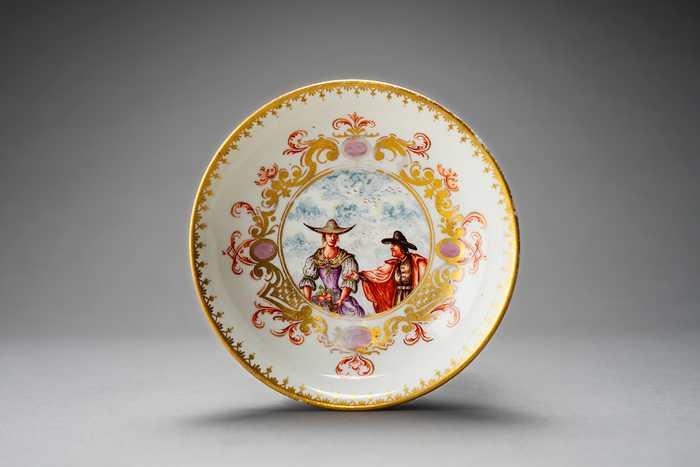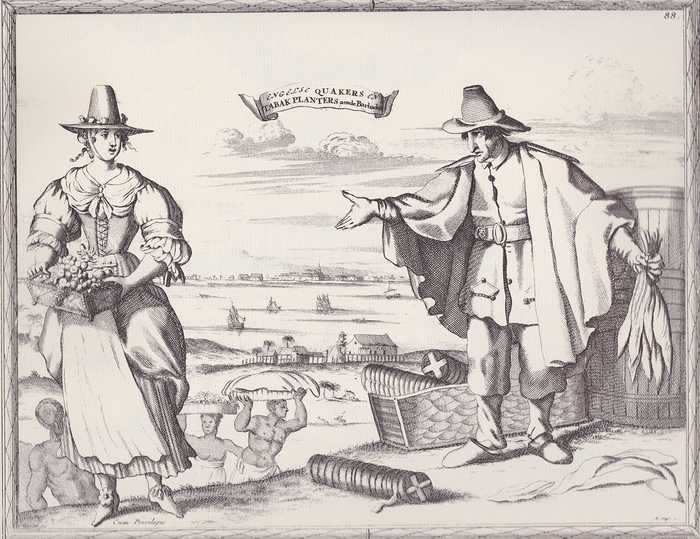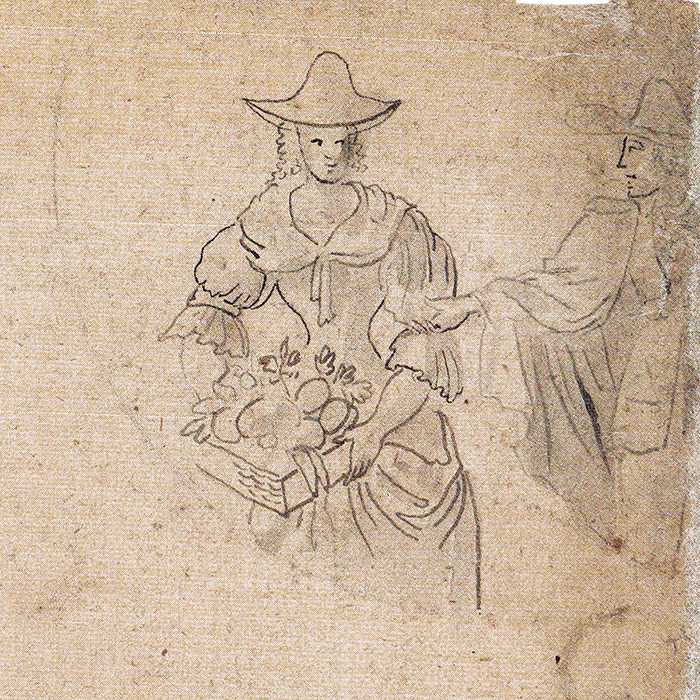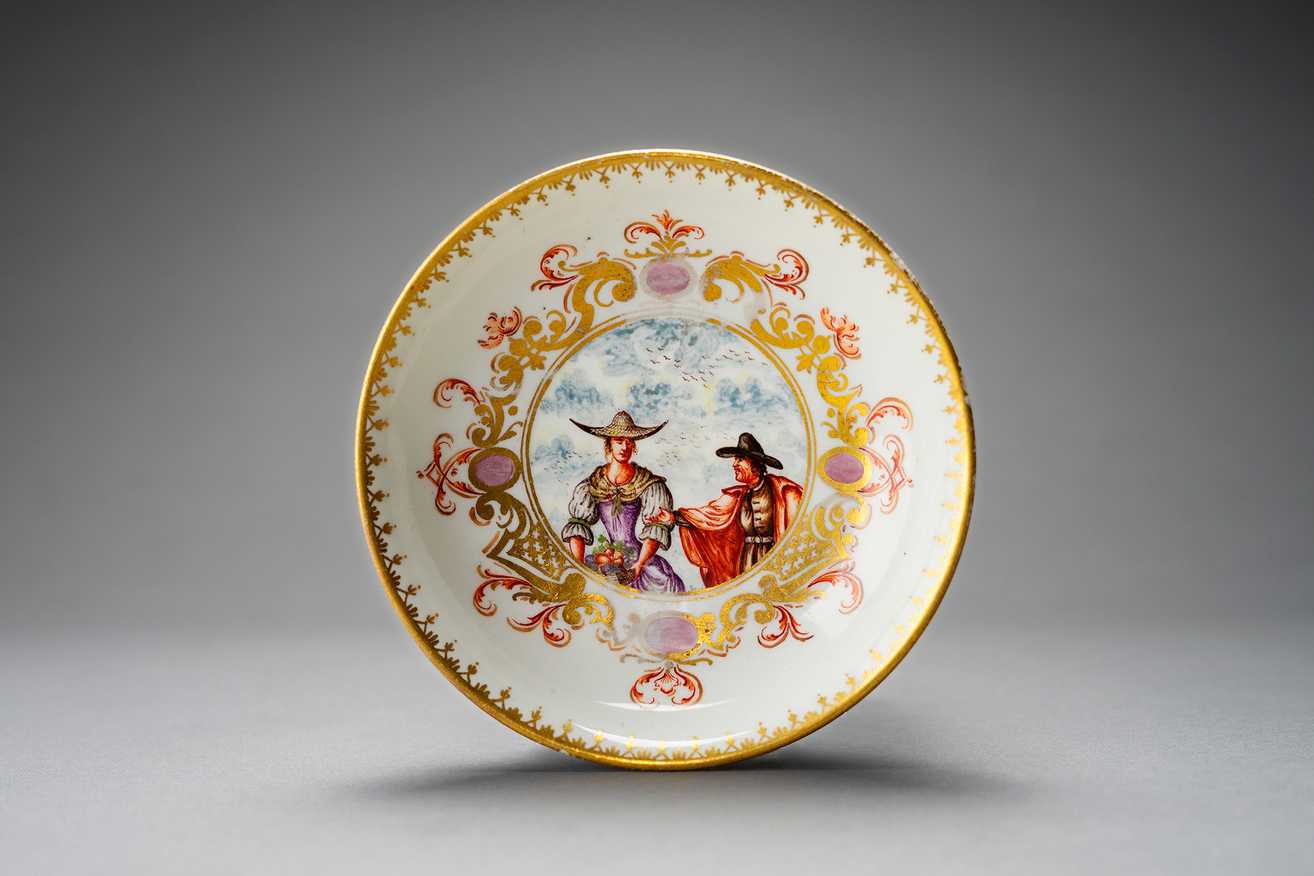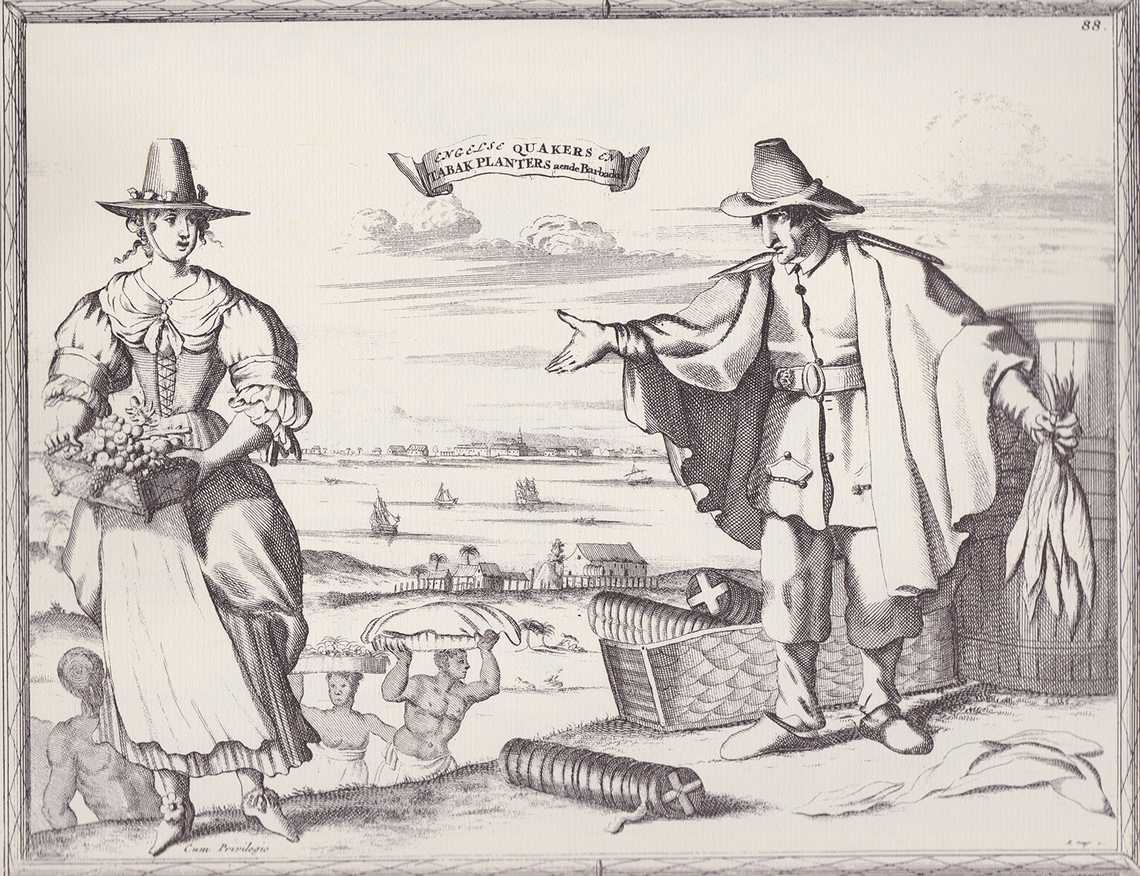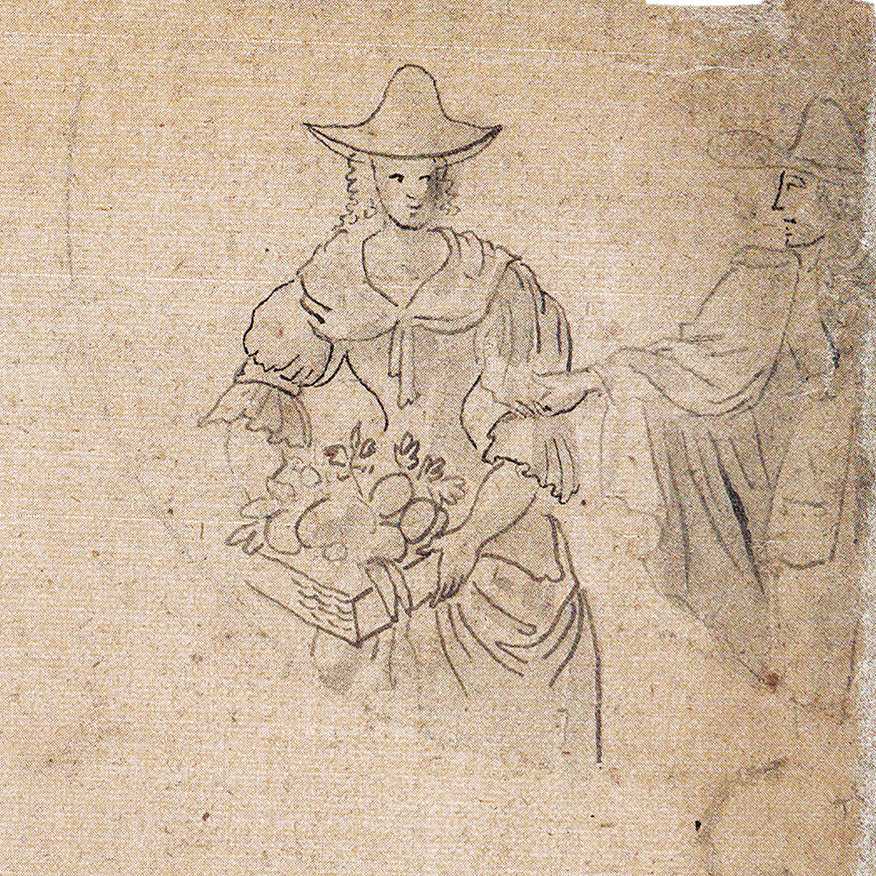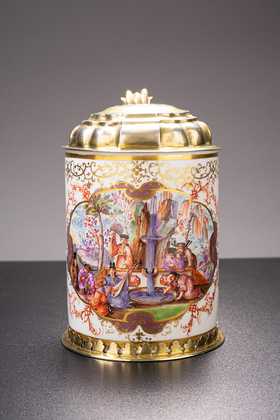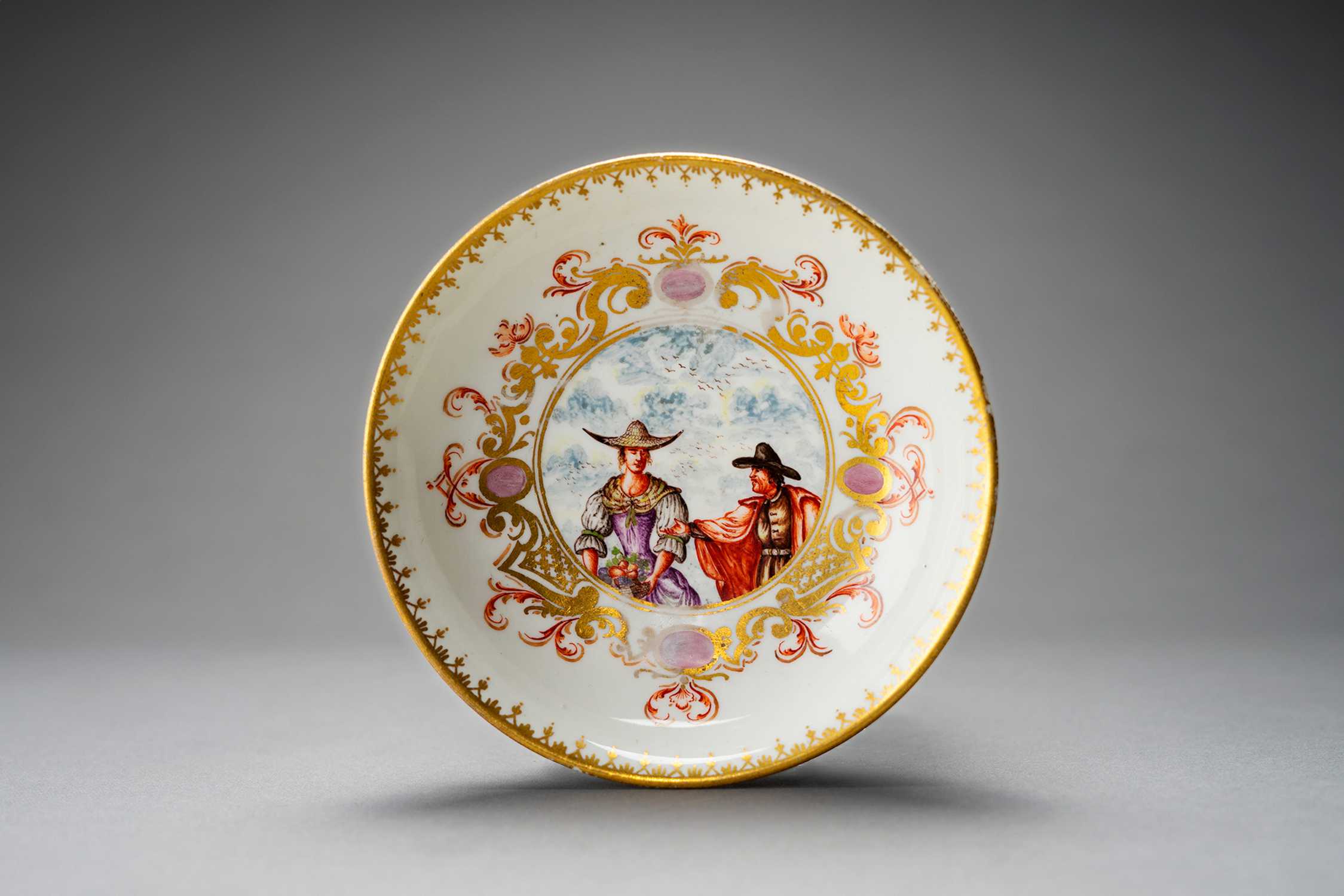
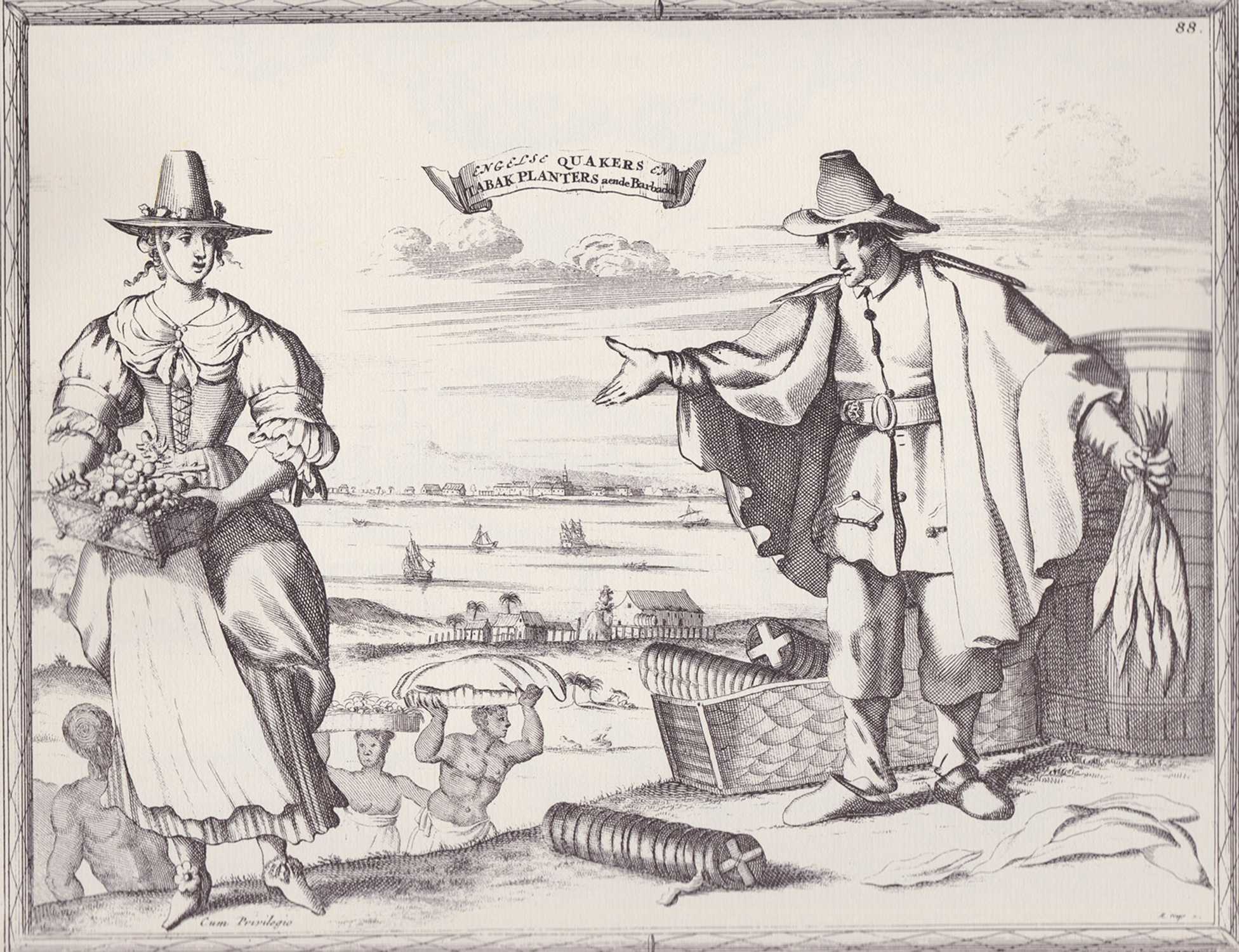
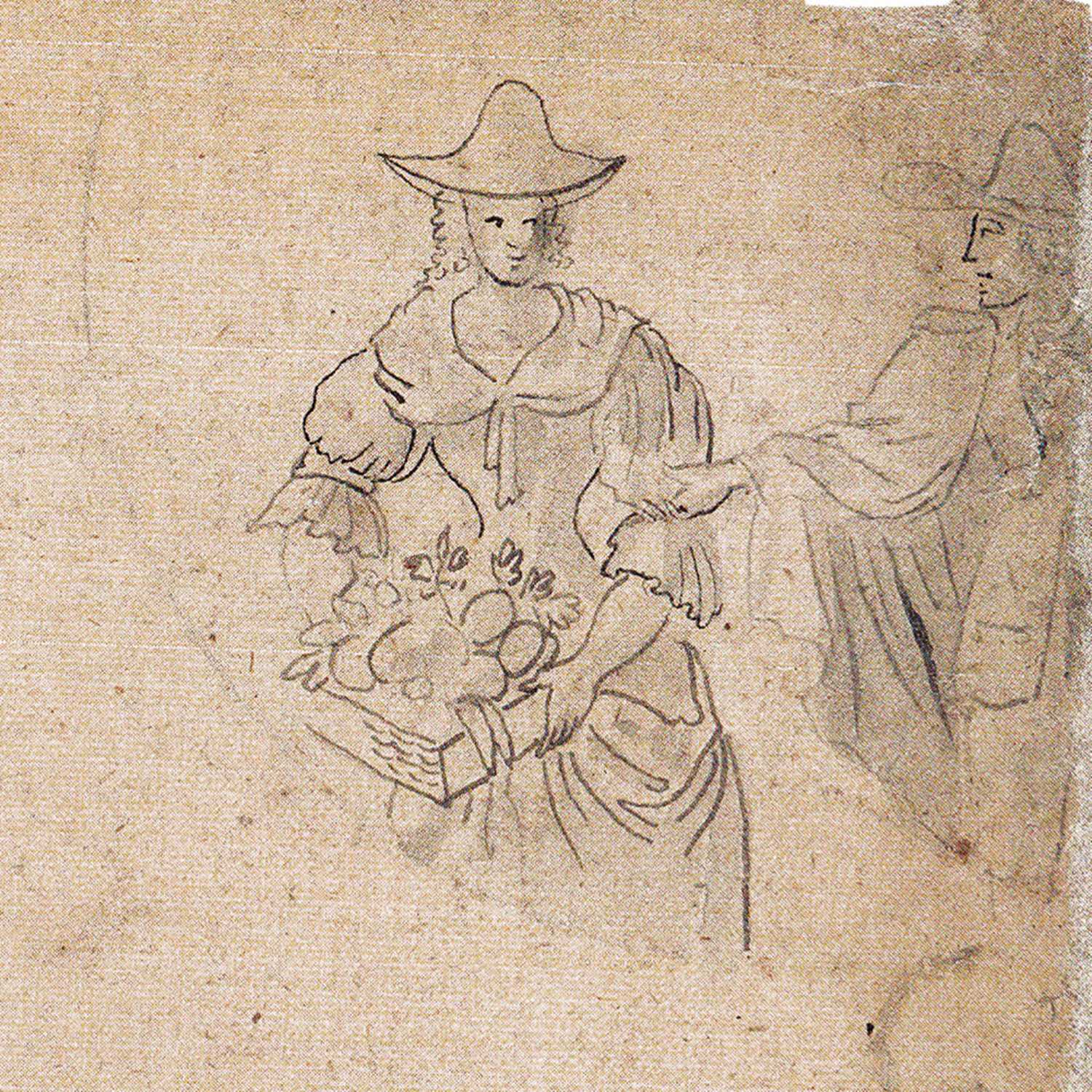
Saucer of Böttger porcelain with earliest Höroldt painting of half figures
Meissen 1721
Ø 13 cm, 3 cm high
Incised ‘x’, no swords mark
Description
The painting on this saucer is one of Höroldt’s earliest creations, at his Meissen era, beginning rd. 1721. Of this early Höroldt porcelain service only one other saucer is known, which Andreina D’Agliano presented in 2001 in the exhibition I fragili lussi (No. 2). Together with five further similarly painted porcelains, they form (in addition to the chinoiseries) a separate complex of Höroldt’s early works. They all go back to engravings of the book Orbis Habitabilis Opida est Vestitus, which was published around 1695 by Carel Allard in Amsterdam. They do not show any Chinese or Oriental people, but Eskimos, North American Indians or – as on our piece – English Quakers on a tobacco plantation in Barbados.
Höroldt met the taste of that time, which was attracted by such mysterious, exotic worlds (Pietsch 1996 p. 16). According to the current state of knowledge, only 7 porcelains have been preserved, et al. in the Metropolitan Museum of Art New York, Gardiner Museum Toronto („Canada Bowl“) and Victoria & Albert Museum London.
Literature
D`Agliano, Andreina: I fragili lussi. Porcellane di Meissen da musei e collezioni italiane.. Fondazione Pietro Accorsi 2001
Picture-gallery
